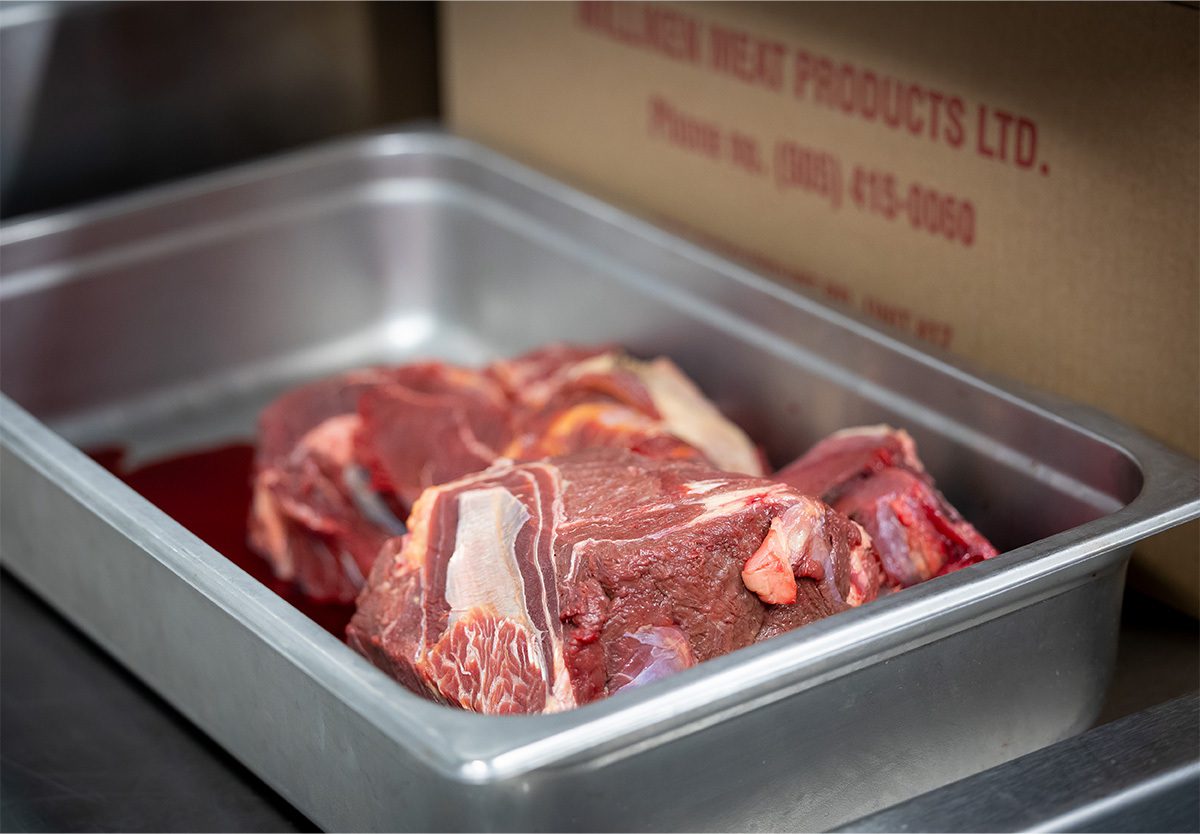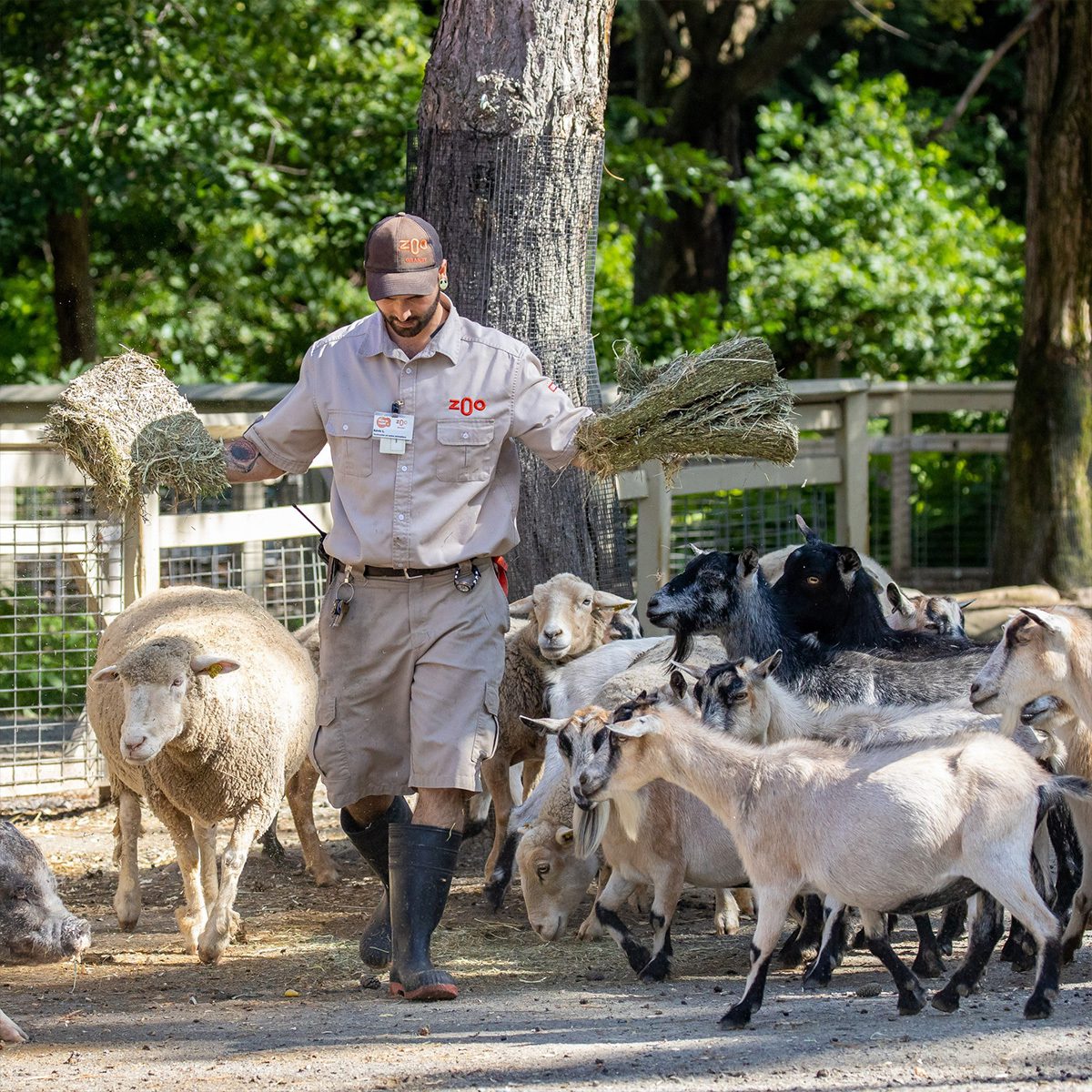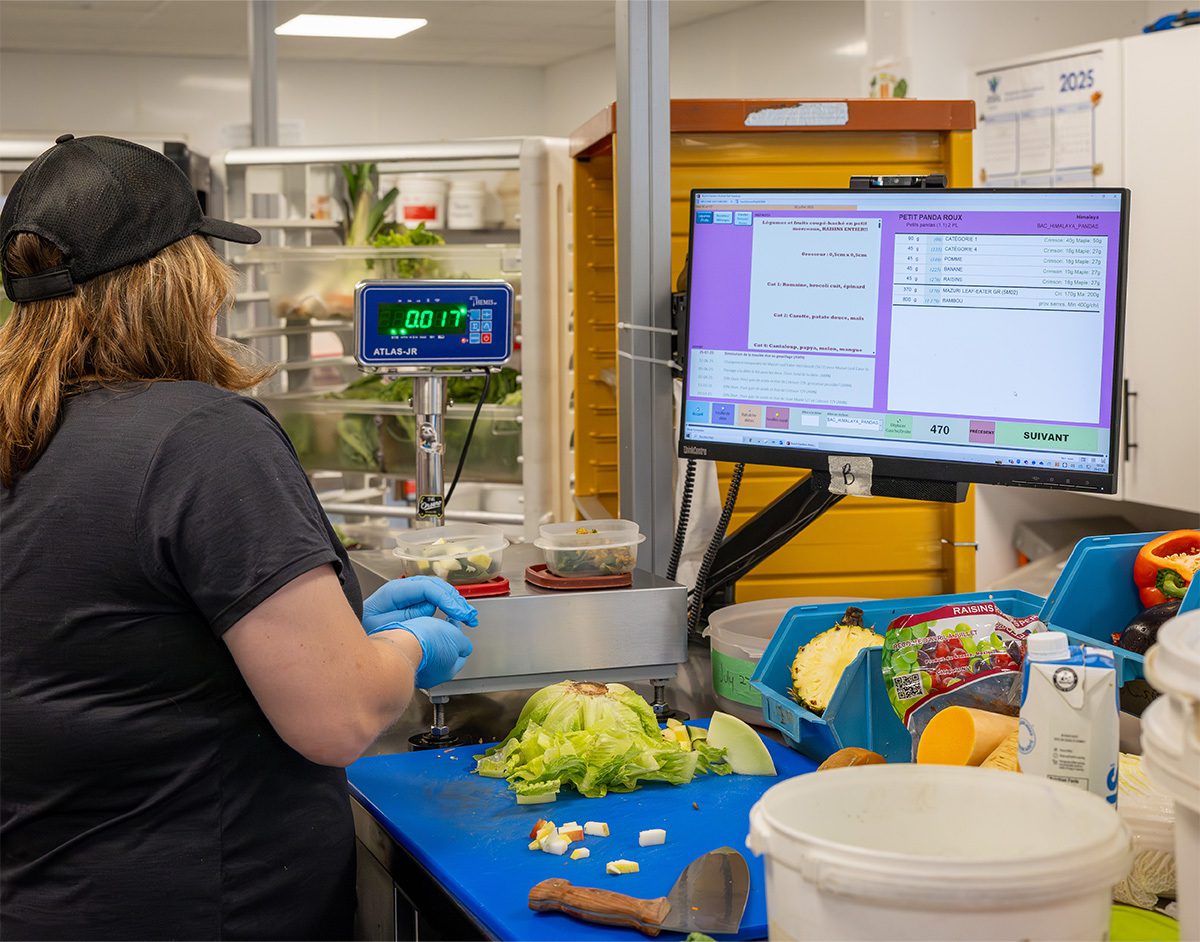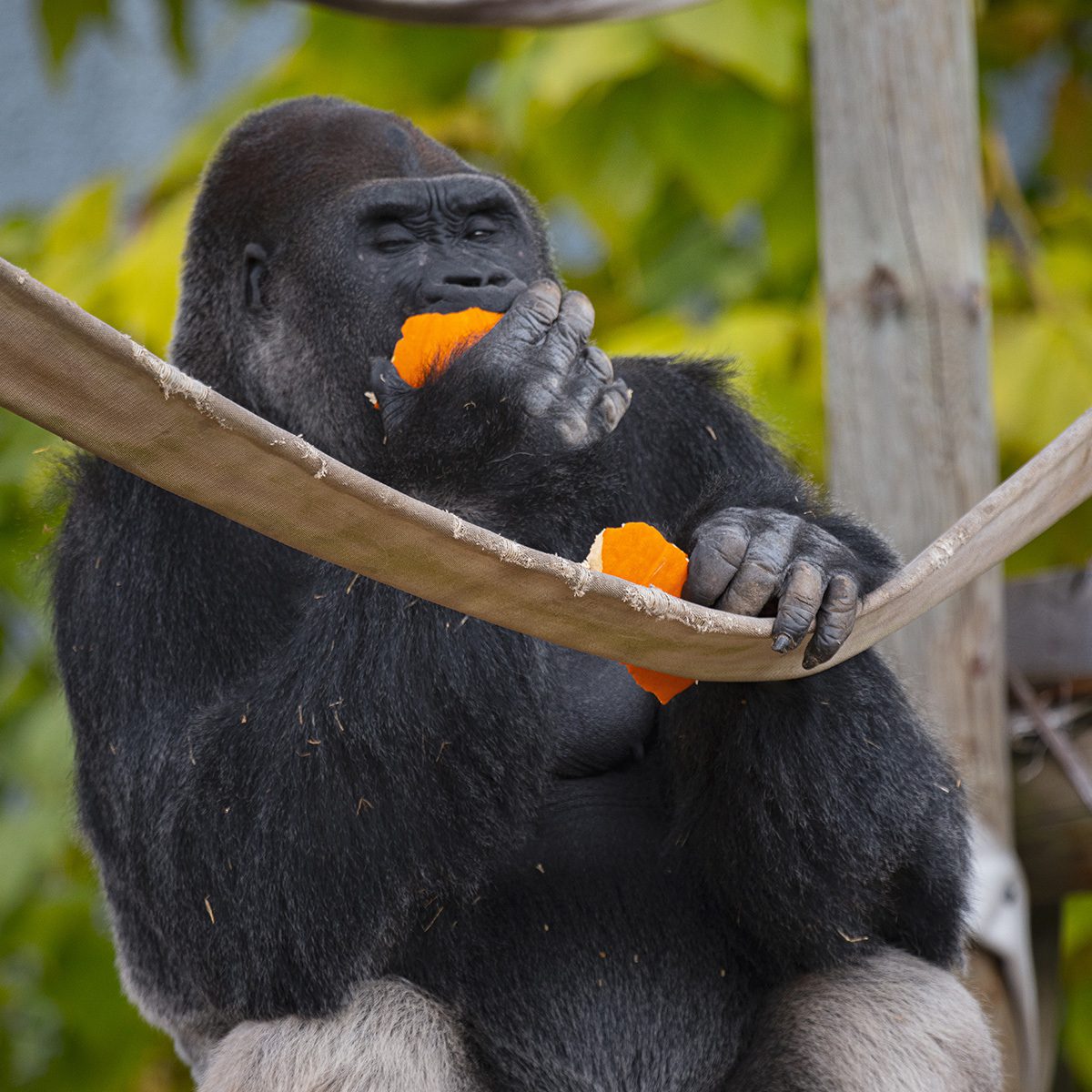In the Plates of Big and Small Animals!
Feeding the residents of the Zoo de Granby is anything but ordinary.
Behind every meal lies a careful balance of science, logistics, and observation. How do you meet the energy needs of an elephant, the picky appetite of a red panda, or the high-protein diet of a tiger, while avoiding the pitfalls of obesity or nutrient deficiencies? With more than 200 species, each with its own habits and metabolism, the nutrition team must juggle a multitude of factors, including physiological needs, natural behaviors, individual health, food safety, and even enrichment, all to ensure that each animal receives a diet that is balanced, stimulating, and tailored to its nature.
On this World Food Day, we invite you to take a peek at what’s on our residents’ plates!
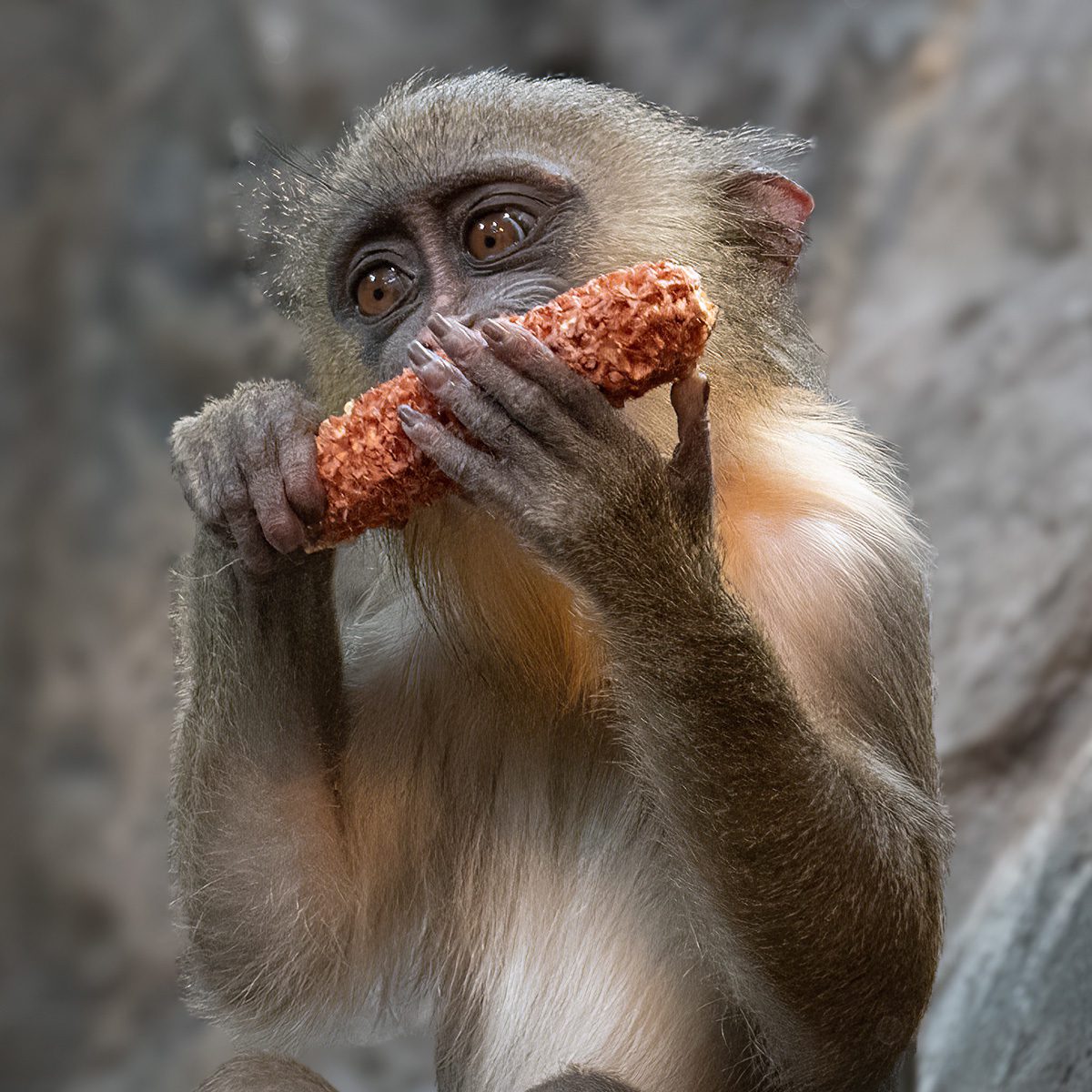

Quality and Rigor on the Menu
Feeding animals in an AZA-accredited zoo involves providing nutritionally balanced diets that promote natural behaviors, following strict guidelines established by the AZA’s Nutrition Advisory Group (NAG).
This team of experts guides zoos in designing diets suited to each species, ensuring that animals receive meals that are healthy, balanced, and engaging.
The NAG provides recommendations on food selection and preparation while ensuring safety and quality. Thanks to their work, zoos can offer meals that support animal health, well-being, and vitality, while sharing best practices across institutions.
Meeting the Specific Needs of Each Animal

With over 1,800 animals from all corners of the globe, a wide variety of foods is needed to meet the needs of every species. Nutritional alternatives and equivalents must also be found among foods available on North American markets.
Herbivores, carnivores, frugivores, piscivores, omnivores, and dietary specialists all need diets that fit their specific requirements.
To meet this challenge, a wide assortment of pellets, fruits and vegetables, fish, seafood, nuts, grains, and more is on the shopping list.
Enormous quantities of hay (millet, alfalfa, clover…) are consumed daily by extraordinary herbivores such as elephants, rhinos, giraffes, and hippos, requiring a constant and substantial supply.
In the animal kitchen alone, nearly 95 crates of apples, 364 crates of lettuce, a ton of carrots, and 14 tons of meat are ordered each year, just to give a few examples.
The annual bill for fruits and vegetables alone is comparable to the price of a small car!
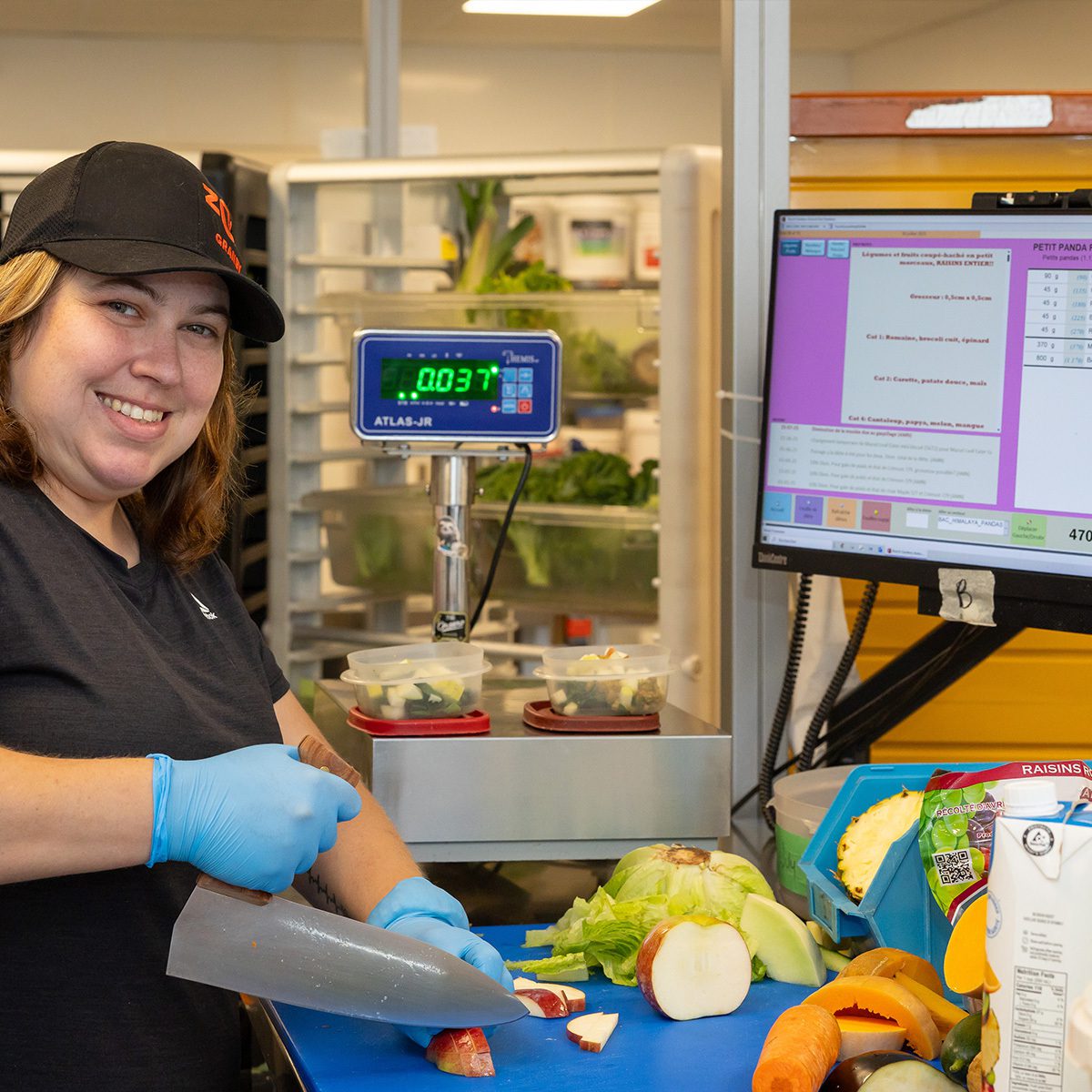
Balanced Recipes Tailored to Needs
Animal nutritionists and kitchen staff work from a “recipe book”, digital feeding sheets that detail each species’ daily menu, specifying the type of food and exact portion by the gram.
Quantities are determined based on activity levels, overall condition, seasonal energy needs, and more. Individual variations are also considered: for health reasons, personal preferences, or allergies, the meals of some individuals within a species may be temporarily, seasonally, or permanently modified. Dietary quirks are not exclusive to children!
Rather than struggle, staff find ways to work around the animal’s preferences, for example by blending the food into a smoothie or a homemade treat bar.
All available fruits and vegetables are divided into five categories, allowing staff to play with seasonal availability and provide variety while meeting nutritional requirements.
Out of season for strawberries? Another equivalent fruit from the same category can be used. Does an animal refuse its broccoli? An alternative is offered that is palatable and nutritionally equivalent.
Texture and presentation are also varied to stimulate appetite: some prefer diced, whole, skewered, or pureed foods. These details are carefully tracked in the team’s essential kitchen tool.
Meals as Enrichment: Working (a Little!) for Your Dinner
Unlike their wild counterparts, animals in human care have it much easier at mealtime.
A dedicated team prepares and serves fresh food in sufficient quantities, requiring minimal effort from the animals. Since searching for food is one of the activities animals spend the most time on in the wild, it is our responsibility to make meals an opportunity for residents to express species-typical feeding behaviors and to provide stimulation.
Enrichissement pour petits et grands!
Depending on the species, the daily diet is often divided into multiple meals designed to encourage natural feeding behaviors. For example, diced vegetables are scattered around the mandrills’ habitat rather than placed in a bowl, forcing the group members to forage as they would in the wild. Hidden feeding stations throughout the gorilla enclosures provide snacks at different times of the day without human intervention.
Like humans, animals can be quite greedy, and treats can motivate them to put in a little extra effort to earn a reward. Fruits, carrot slices, nuts, or peanut butter hidden in a puzzle feeder provide physical and mental enrichment. These foods can also be used during voluntary medical training, which encourages animals to cooperate for certain procedures without anesthesia.
In the end, feeding the animals at the Zoo de Granby is not just about distributing meals: it is about observing, understanding, and supporting each species’ daily life. Behind every fruit, branch, or bite is a true team effort combining science, passion, and respect for animal needs. Here, every meal becomes a small celebration of diversity and animal well-being.


